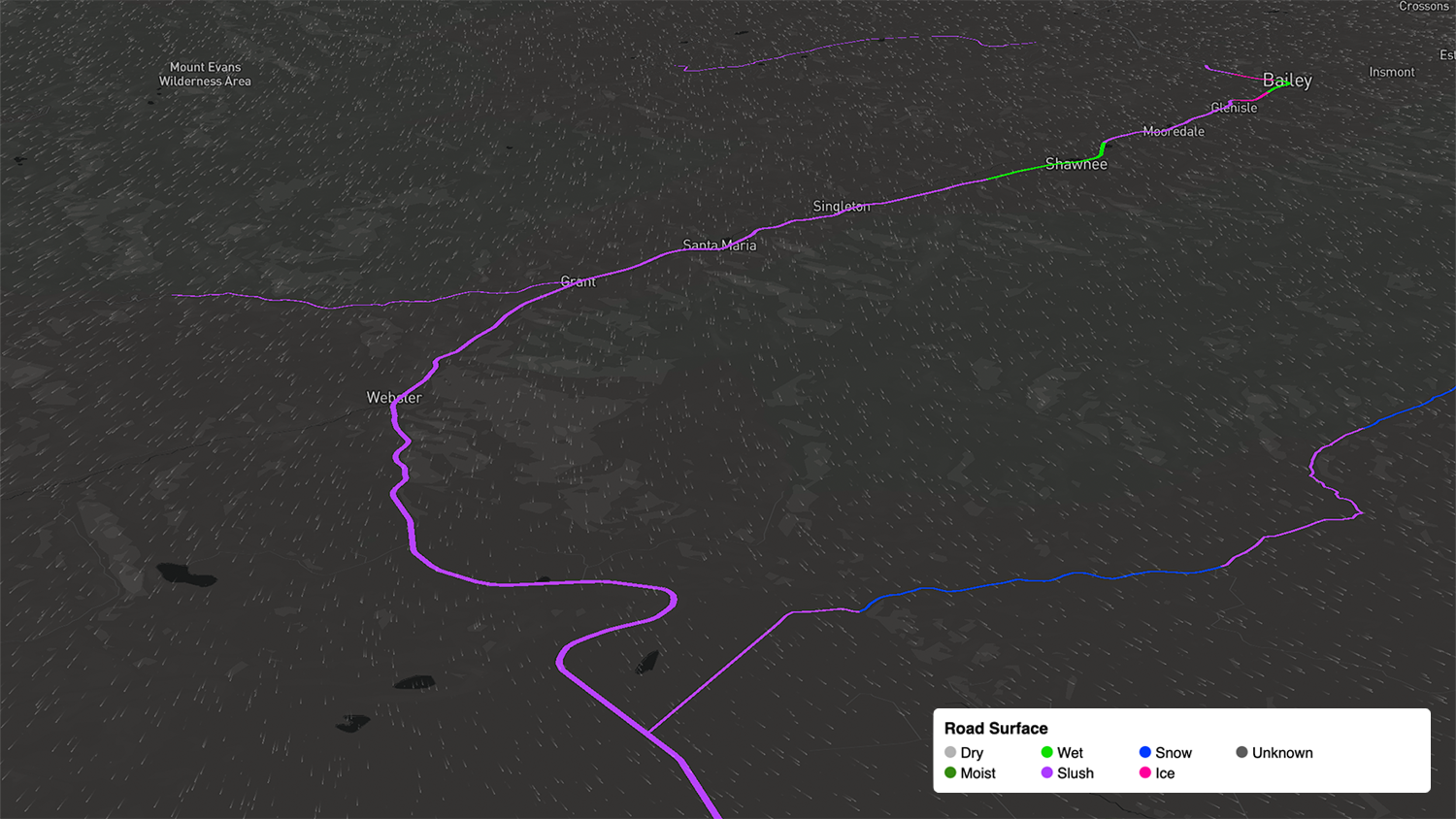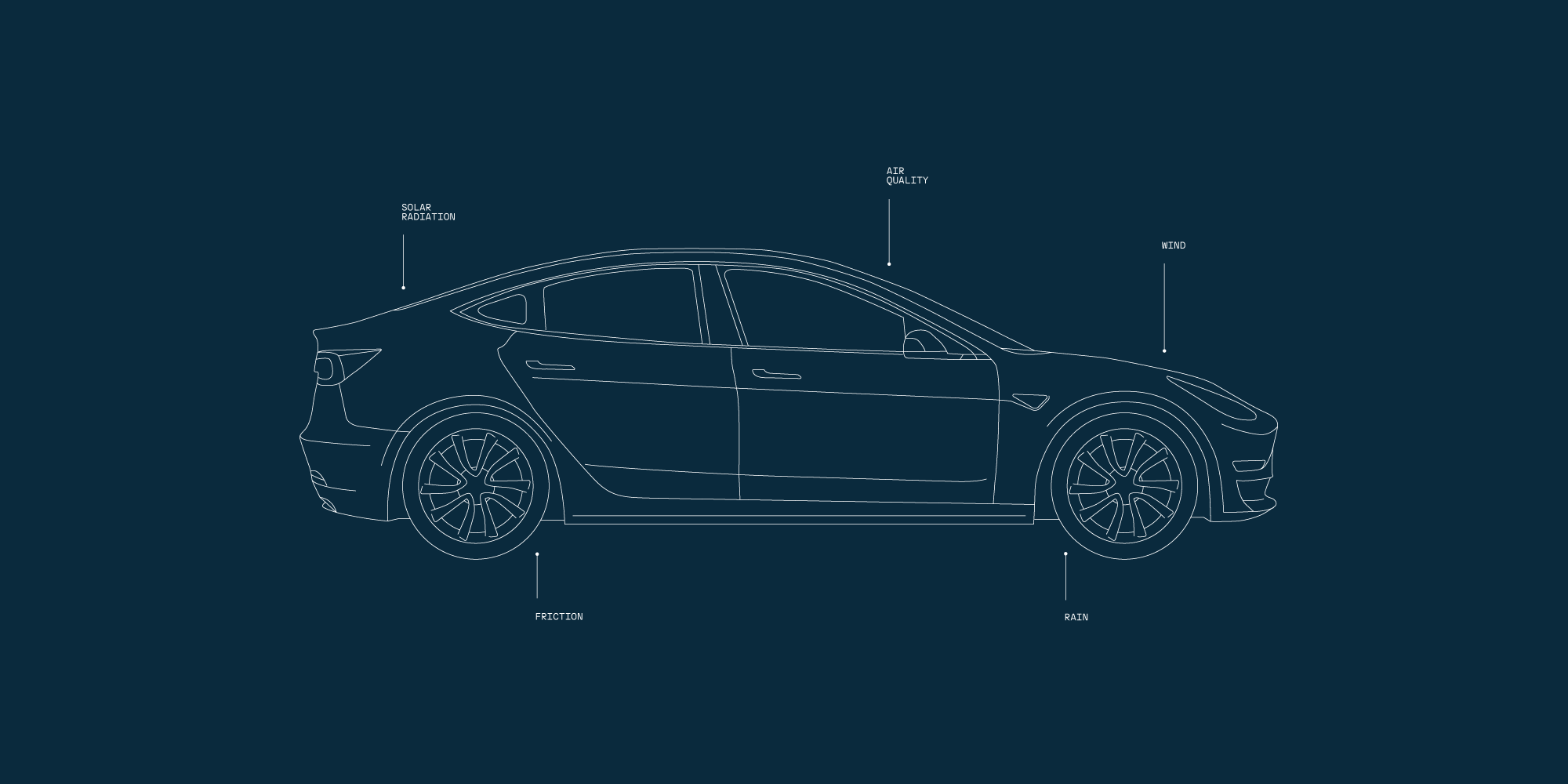Imagine for a moment your vehicle isn't just following a blue line on a screen, but actively reading the world around you, anticipating dangers, making micro-adjustments, and quietly optimizing your journey before challenges ever materialize. This isn't science fiction, it's the next evolutionary leap in automotive intelligence that's already unfolding.
When Tesla recently integrated rain radar visualization into their navigation systems, they weren't just adding a feature, they were acknowledging a fundamental truth: our vehicles need environmental context to truly serve us. Seeing precipitation patterns directly on your navigation screen feels immediately valuable, almost obvious in hindsight. But here’s the thing: this is just the first raindrop in a stream of environmental intelligence that will make vehicles truly weather-aware.
Weather radar shows us atmospheric conditions. What it doesn't reveal is the critical point/position where the rubber meets the road.
The surface reality gap: Where navigation actually happens
Picture yourself winding through mountain roads as storm clouds gather overhead. Your dashboard shows moderate precipitation in soft blue pixels, but what's actually happening where it matters?
That moderate rainfall might be:
Creating invisible black ice on the upcoming bridge
Pooling dangerously in that low section around the bend
Reducing visibility to near-zero as you approach the fog-prone valley
Transforming perfectly grippy asphalt into a surface with 40% less friction
This illustrates a critical insight that will drive the next generation of navigation: driving doesn't happen in the clouds, it happens at the exact point where your tires contact pavement. The most valuable weather intelligence isn't meteorological, it's mechanical and physical.
Transforming information into adaptation
Today's weather visualization tools suffer from a fundamental limitation: they inform without empowering. They show you data, then leave you to interpret what it means for your specific vehicle on your specific route at this specific moment.
True vehicular weather intelligence will flip this relationship by translating raw environmental data into seamless adaptations: your route dynamically re‑routes whenever the probability of ice formation on the original path rises above 70 percent, vehicle systems reconfigure within milliseconds as surface conditions deteriorate, energy‑management algorithms deliver error‑free range predictions based on how the weather will affect your specific EV and safety distances automatically adapt to match actual surface conditions.
At Vaisala Xweather, we are already building the high-resolution road weather intelligence infrastructure that makes these scenarios possible today, not in some distant future.

Explore Vaisala Xweather's real-time road weather data in Xweather Live.
The technical symphony behind intelligent navigation
Creating genuinely useful weather-aware navigation isn't simply about adding more data, it requires orchestrating multiple intelligence layers into a coherent system:
Micro-climate modeling that captures hyperlocal variations invisible to standard weather forecasts
Road weather modeling that predicts road surface temperature gradients and water, snow and ice probability on all public roads
Computer vision systems that analyze video feeds from thousands of connected vehicles to detect standing water and visibility limitations in real time
Dynamic friction calculation that continuously assesses the changing relationship between your specific tires and the road surface
Pattern recognition engines that identify high-risk zones based on historical incident data correlated with environmental conditions
When these layers work in concert, the result isn't just a weather-aware vehicle, it's an environmentally intelligent system that fundamentally transforms how we move through the world.
Beyond safety: The experience revolution
For forward‑thinking automotive manufacturers, advanced weather intelligence is more than a safety checkbox, it’s the foundation for a reimagined driving experience that inspires range confidence by removing worries about being stranded in adverse conditions, empowers autonomous systems to keep performing even as the environment deteriorates, strengthens driver trust by detecting hazards before humans can perceive them, and continuously optimizes each journey to balance efficiency, safety, and comfort without requiring constant driver input.
The integration imperative
The next evolution in intelligent navigation won't emerge from bolting weather features onto existing systems, it will come from treating environmental intelligence as core infrastructure within the vehicle's operational brain.
Tomorrow's vehicles won't simply display weather, they'll understand it. They'll interpret complex environmental patterns, predict how those patterns will evolve, and smoothly adapt both route and vehicle systems for optimal performance.
For automotive innovators building software-defined vehicles, the implications are clear: environmental intelligence isn't optional, it's essential architecture for creating truly intelligent mobility. The manufacturers who integrate this perspective earliest will define what driving means in the coming decade.
In the race toward vehicles that don't just transport but truly serve us, the winners won't merely see the road, they'll comprehend every molecule of it.
